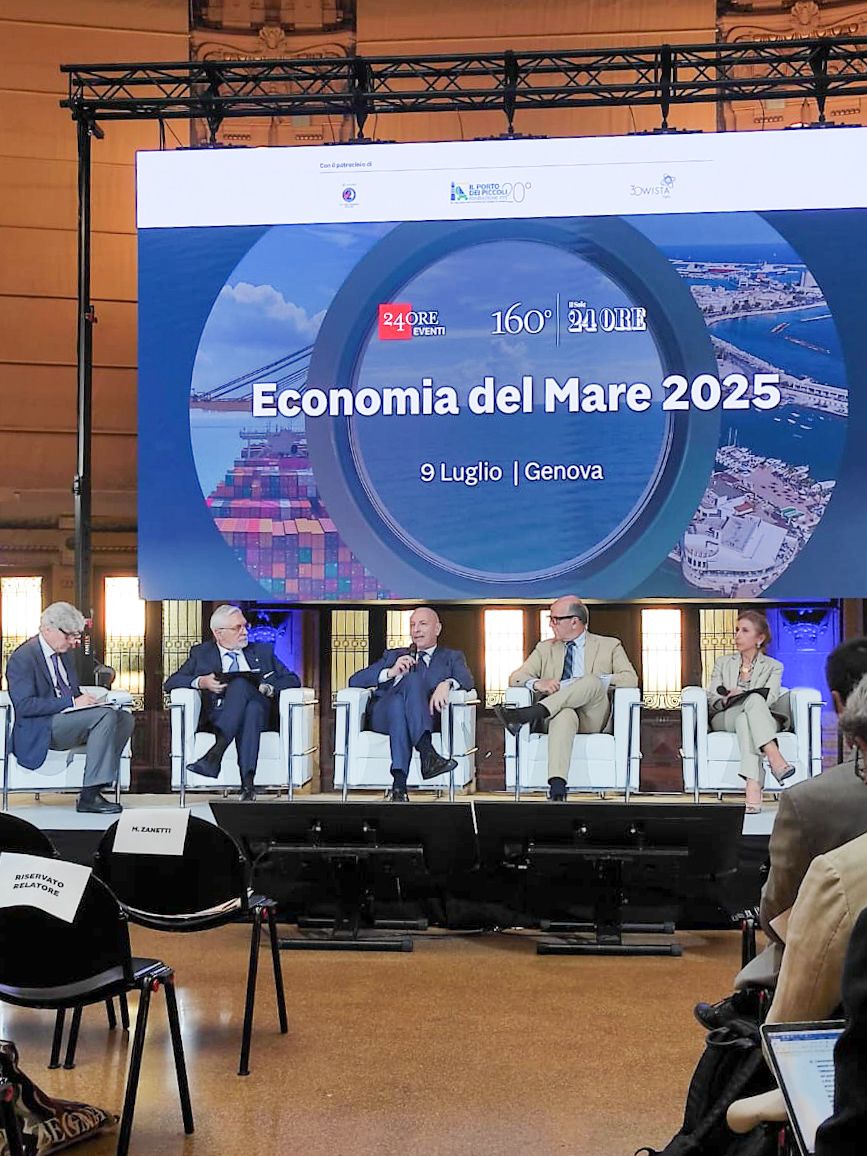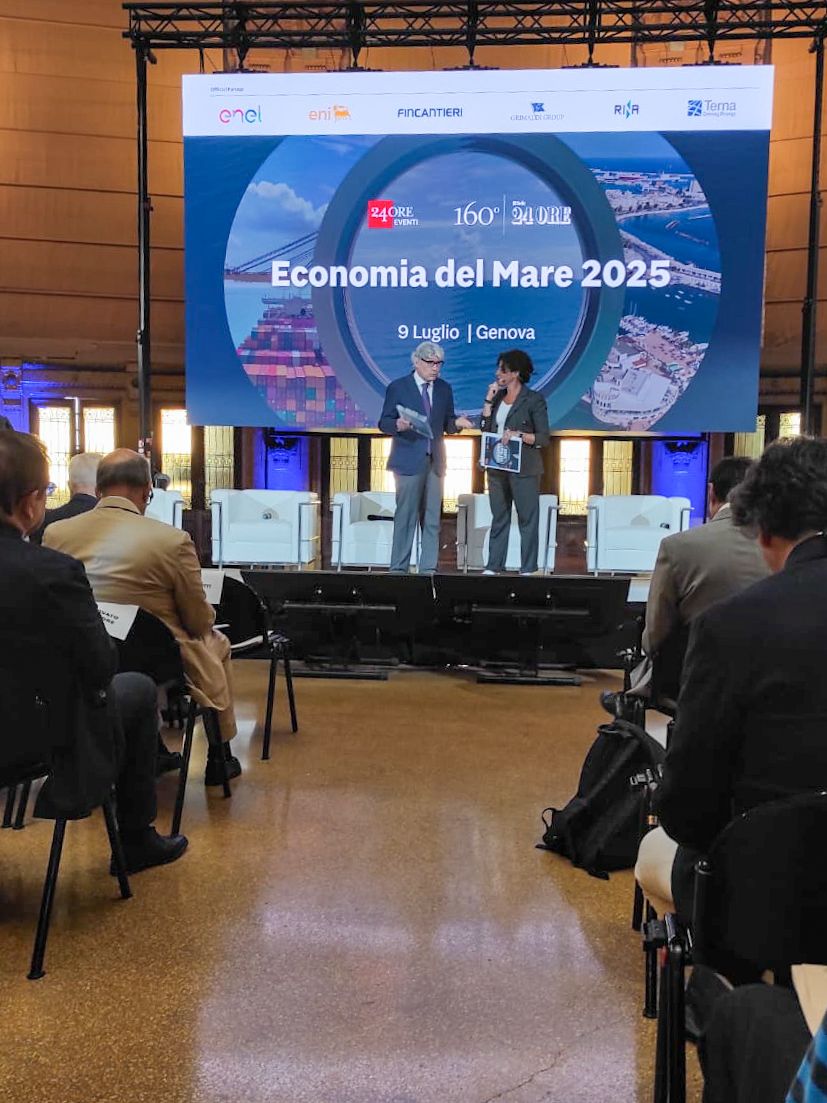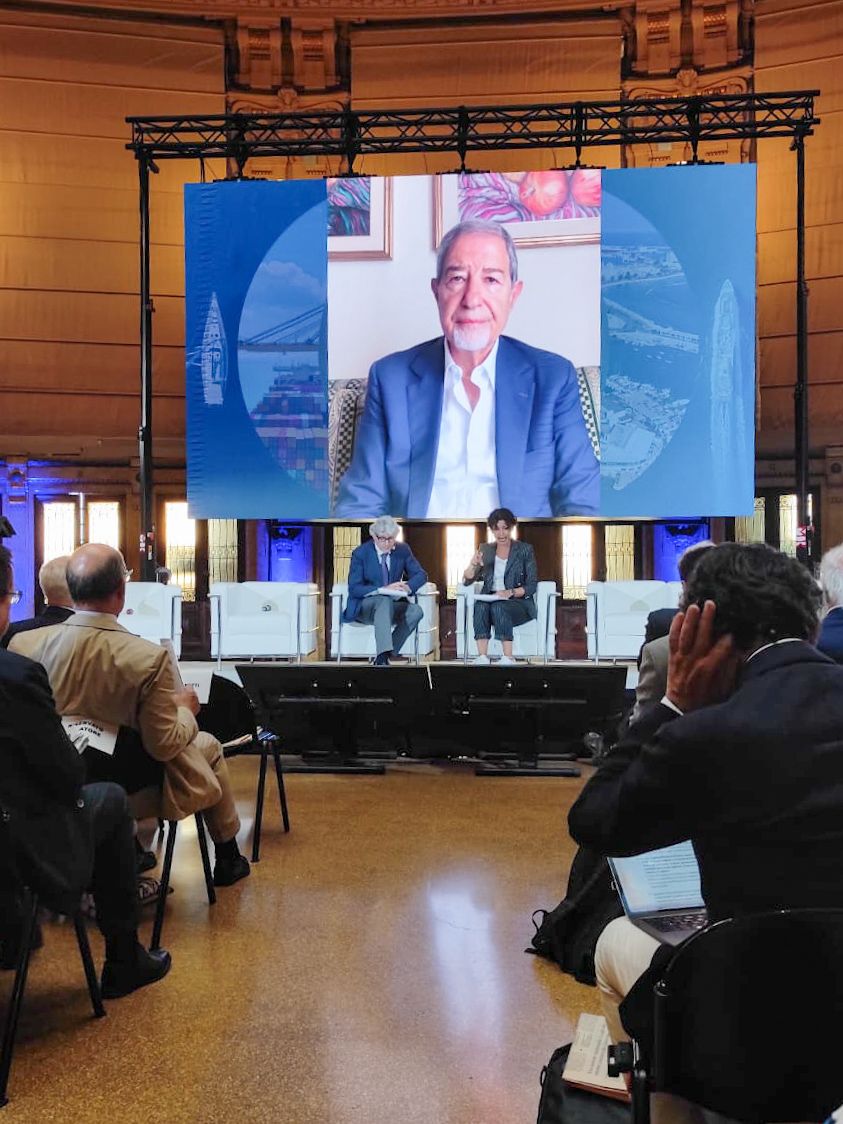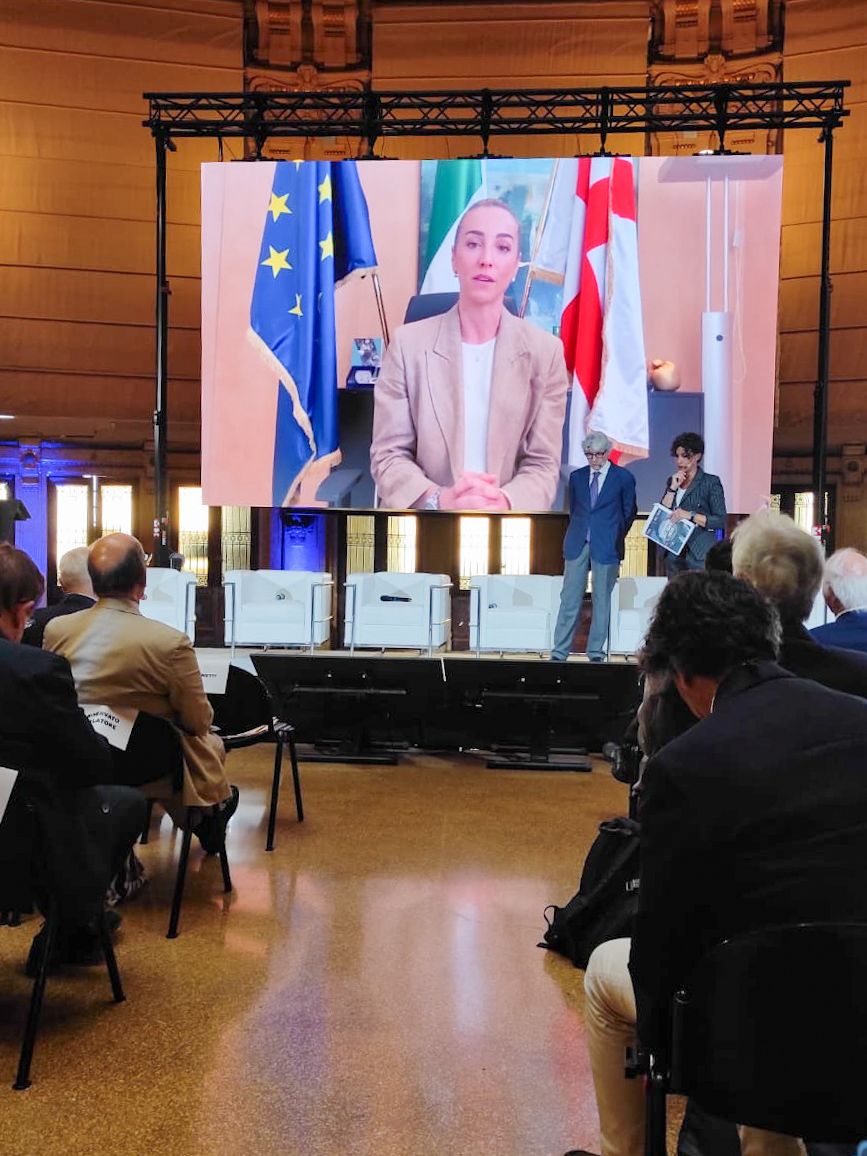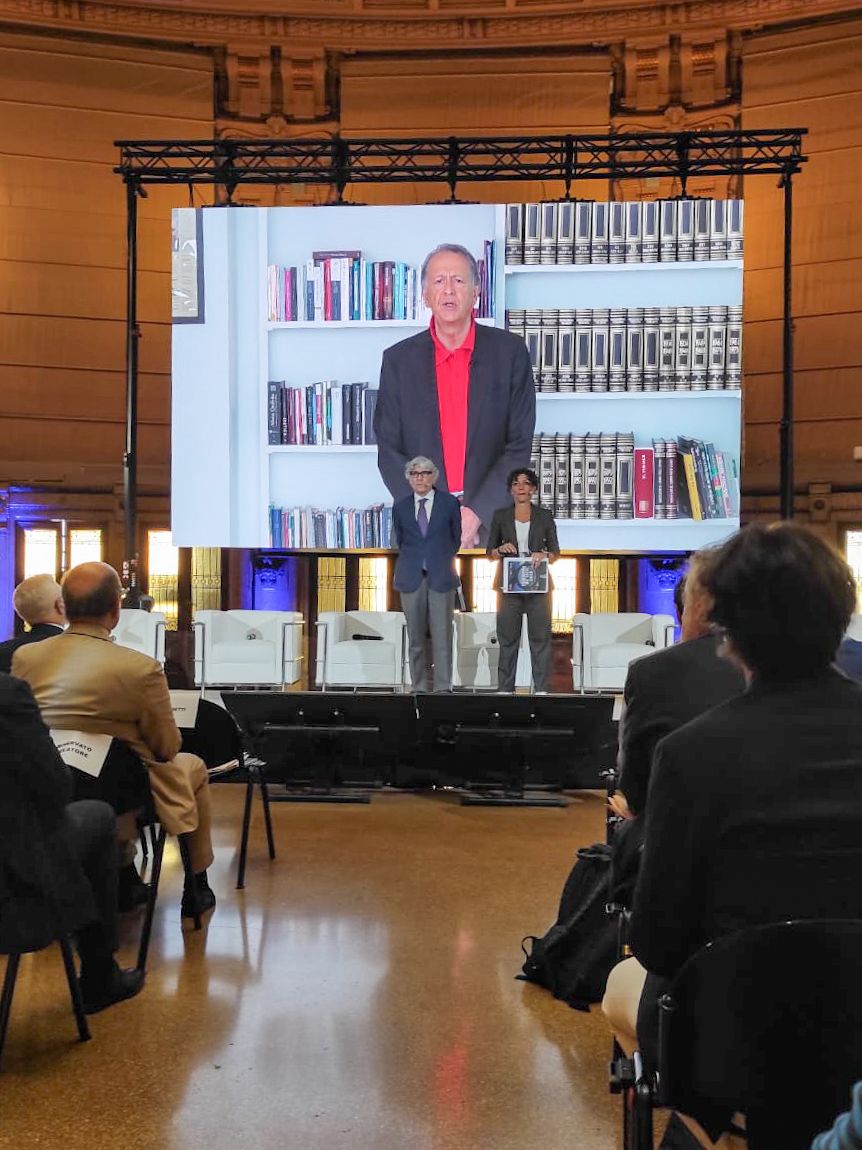Sea Economy 2025: Genoa relaunches the Blue Economy
Yesterday, July 9, 2025, in Genoa, at the Sala delle Grida of the Palazzo della Borsa, the 4th edition of the Sea Economy conference took place, organized by Il Sole 24 Ore. The event attracted a broad spectrum of institutional, entrepreneurial, and academic leaders engaged in discussing the growth of Italy’s blue economy and Genoa’s central role in the Mediterranean.
The opening speech by Nello Musumeci, Minister for Civil Protection and Maritime Policies, highlighted the importance of effective national coordination for maritime policies, emphasizing how the reform of the port system — set to be enacted by the end of the year — aims to strengthen the strategic role of the Port System Authorities by granting greater autonomy and governance capabilities to local territories. The minister stressed the protection of underwater infrastructures, cables, and pipelines, which are considered fundamental assets for the country’s energy and digital security.
Among the main institutional guests were Marco Bucci, President of the Liguria Region, who underscored the historic and cultural bond between Genoa and the sea, and Edoardo Rixi, Deputy Minister of Infrastructure and Transport, who addressed the topics of port infrastructures and their integration with European logistics networks. Rixi highlighted the need to develop appropriate technologies and regulations for the protection and optimization of underwater assets, aiming to make the Italian port system increasingly competitive and sustainable.
The event featured industry experts such as Massimo Deandreis, General Director of SRM – Studies and Research for Southern Italy of the Intesa Sanpaolo Group, who focused on the role of Special Economic Zones (SEZs) and Simplified Logistics Zones (SLZs) in attracting investments in the maritime sector and encouraging industrial reshoring that involves the Mediterranean as a strategic hub. Deandreis emphasized how these special areas can be key levers to strengthen port competitiveness and create an integrated system between the port, its hinterland, and land connections.
During the day, discussions also covered training and human capital, reflecting on how to bridge the gap between supply and demand for specific skills. Umberto Risso, President of Confindustria Genoa, stressed the urgency of linking technical and university education to the real needs of maritime sector companies, to support the digital and green transition of the industry.
Contributions on nautical tourism were also present, considered one of the strategic levers of the blue economy. Giovanni Acampora, President of Assonautica Italiana, explained how digital innovation can improve hospitality in tourist ports, promoting sustainable itineraries and more efficient management systems. This approach can boost local maritime tourism by integrating it with other port activities.
The 13th OsserMare Report – Unioncamere/Tagliacarne, presented during the conference, confirmed that the blue economy is a leading sector for Italy, valued at €216.7 billion with over one million employees. Liguria, contributing more than 12% of the region’s added value, remains one of the most dynamic and strategic areas in the country.
In summary, Sea Economy 2025 highlighted the great potential and challenges of the Italian maritime sector, placing Genoa at the center of a transformation process combining tradition and innovation, infrastructural development and environmental sustainability, training and digitalization. The convergence between institutions and the business world, underlined by the speeches of Musumeci, Bucci, Rixi, and other key players, points to a defined path toward Mediterranean leadership, provided that the announced reforms and investments are implemented concretely and promptly.
By Giampaolo Caserta

